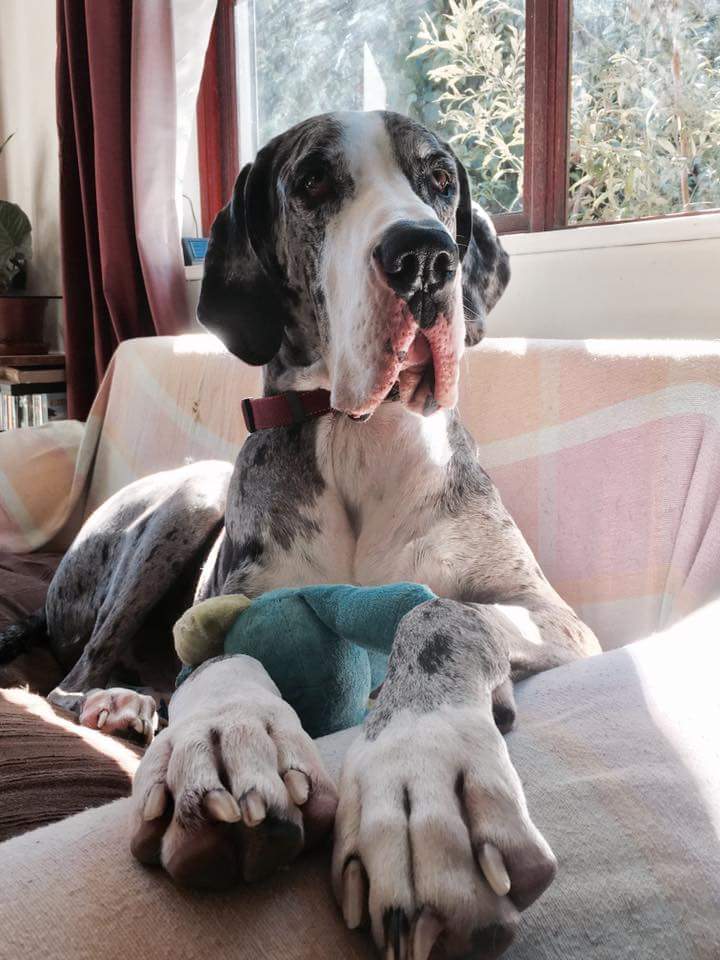
Parvo
Share
This is a painful piece of writing to “put to paper”. The main reason is that it is a devastating disease. The thing that really hurts is that it is completely avoidable.
Seeing innocent puppies succumb to the virus or agonize for days before making a turn around.
It is absolutely awful. The initial signs are vomiting and from there the condition deteriorates rapidly as bloody diarrhea develops. The pups dehydrate quickly and sepsis sets in. The worst is looking into those pleading eyes. Many cases we get are so far gone that the kindest thing to do is put them out of their misery, as the chances of survival are null.

It seems to be a disease that is closely associated with education and a certain socio-economic state. Thus, it is virtually eradicated in first world countries through vaccination. Unfortunately, in developing countries, it is very prevalent.
What makes Parvo such a problem is its contagiousness and long lasting resistance in the environment.
Transmission is via direct contact with body fluids. It can also be transmitted via human clothes and fomites. What makes it difficult to control is the fact that it survives in the soil for years long after the diseased animal has left the property; only to re-surface at any given time when the climatic conditions are favorable.
In situations where large amounts of unvaccinated dogs and puppies live, the virus thrives and the cycle perpetuates. So vaccination is key, and very successful. Three injections at 3-4 weeks interval provide nearly complete protection.
There is a lot of fantastic work being done by welfare organization in terms of vaccination programs, but it is simply not enough. The task is utterly overwhelming.
Education is key, I believe. I encounter numerous dog owners that just do not know about the disease and the options of prevention.
If you suspect your puppy to be infected, please take it to your nearest vet immediately. Any puppy under a year of age that hasn’t had 3 vaccinations is at risk – and this is super important – they need to have 3 to be safe. Anything less still leaves them vulnerable.
The following signs should make you suspicious, beware; the progression is symptoms is rapid.
- lethargy
- vomiting
- fever
- anorexia
- diarrhoea (bloody)
- dehydration
- collapse
- death
If a vet is not available to you, for whatever reason, you can use the following advice for some help. However these pups need to be hospitalized to give them a fair chance.
- The most important thing is to keep your pup hydrated
- Encourage drinking by adding a small amount of chicken broth, soup or tuna juice to their water
- Syringe some water onto the tongue every hour – please don’t force this, there is a danger of aspiration which can cause lung infection
- Ice cubes are also a good option, especially if your pet is inquisitive and playful. (this applies mostly to warm countries)
- A probiotic will be helpful to replenish the good gut bacteria and help return things to a normal function. There are plenty good quality products available at pet stores and vet shops.
- A small amount of plain, low fat, as natural as possible, yoghurt will help if a probiotic is out of reach
- Slippery elm (Ulmus rubra) helps for cramps and soothes gut lining. Herb powder mixed (50/50) with probiotic powder given at ¼ teaspoon for 5kg 2 times per day, over fresh food or in water
- Human rehydrate products are generally safe for use in dogs. Use the unflavored one. If you are mixing it in drinking water please ensure the availability of a plain water bowl at all times in case your pet senses it’s presence
- Chamomile (Matricaria recutita) is a powerful anti-inflammatory and even if not directly effective for the diarrhea, the antioxidant and calming effect promotes sleep, which promotes healing.
- Remove their normal food, as this could irritate the stomach more.
- Prevent eating of grass
- If your pup is vomiting a lot, remove all food for a few hours and then only offer a bland diet.
- For food encourage boiled chicken and rice, or just rice for now – this is gentle on the stomach and helps absorb toxins. This is not an option if the pup is vomiting a lot.
- There are also various commercially available gastro-intestinal tins that will help feeding once vomiting has stopped.
- If they can’t keep down fluids they are at higher risk of dehydration and it also indicates that you are dealing with a more severe condition
- Herbal teas can be effective if offered in water or frozen into a block.
- Peppermint and Ginger are the most effective herbals to use in this case.
- Lifewave patches: Glutathione, Carnosine
Prevention is better than cure, please spread the word
Dr. Sarah
